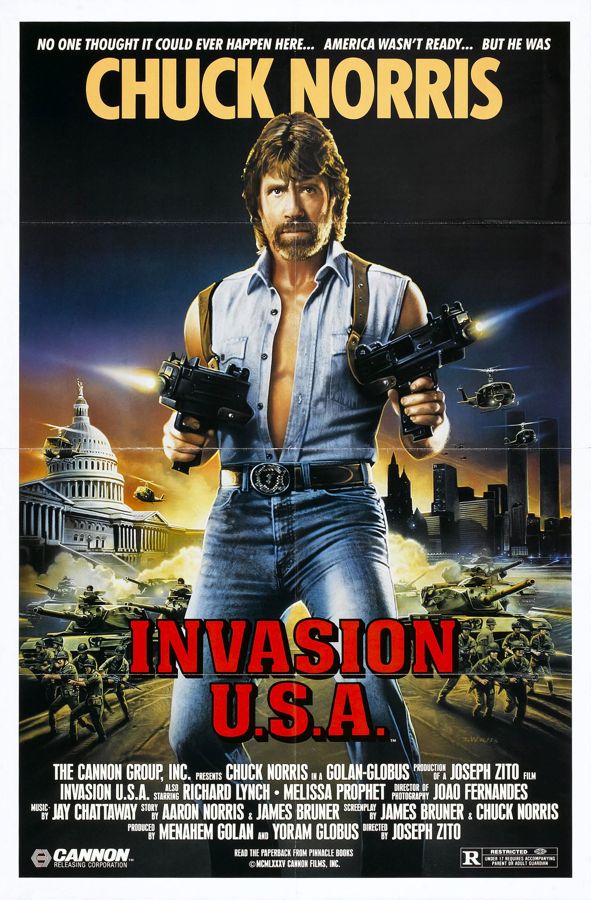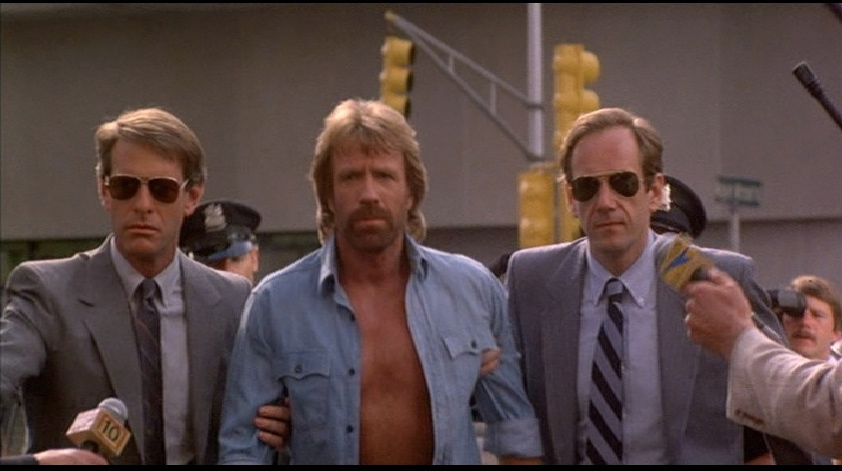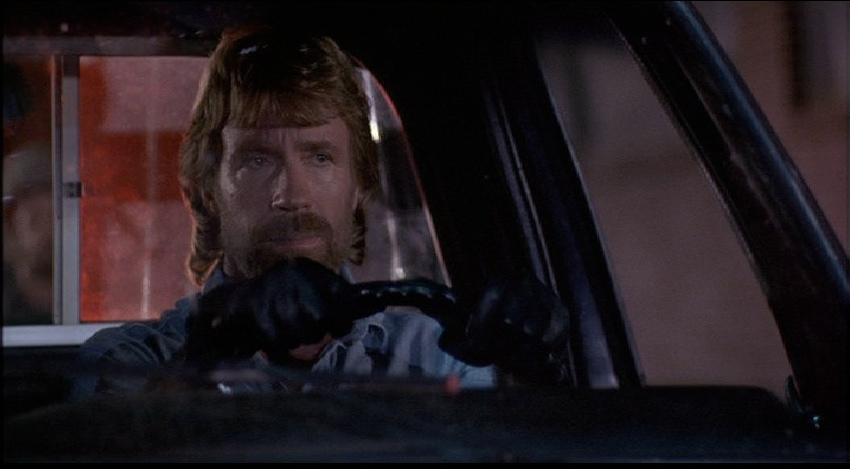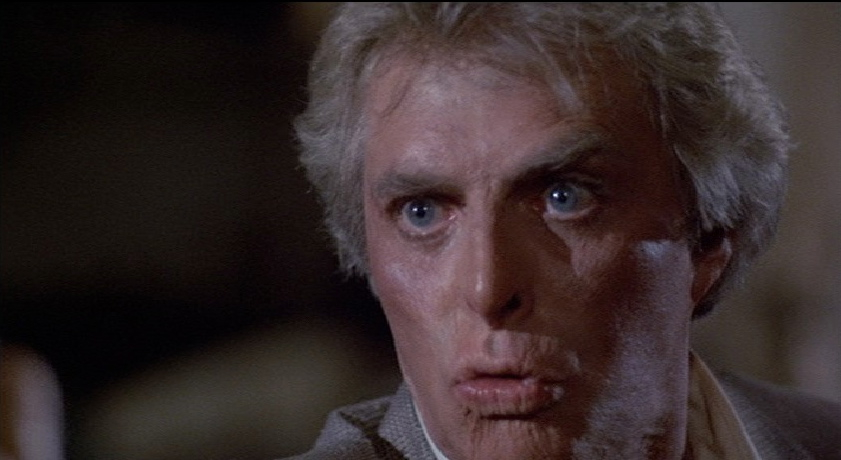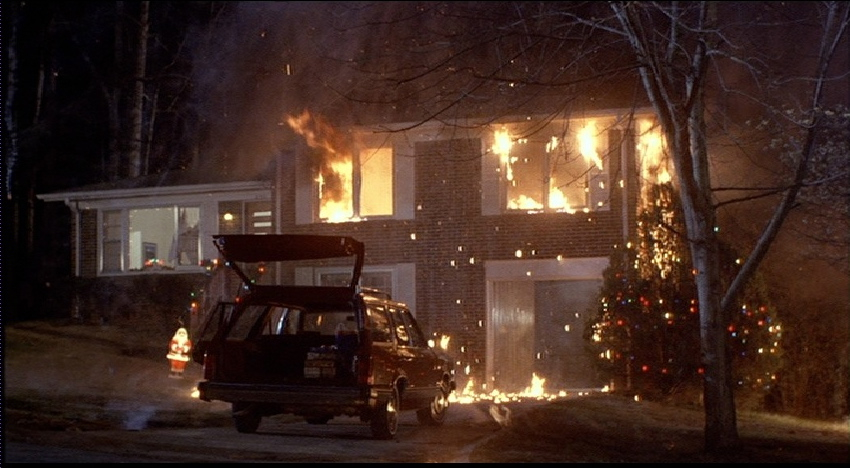So, as I announced this past Monday, today’s post marks a transition away from THE WYNORSKI PROJECT (which had unfortunately become a joke I no longer found amusing) into an enterprise I hope will turn out to be much more personally fulfilling. By broadening my focus to the vast world of low-budget, independent genre cinema in general I will be better equipped to write the kind of essays I enjoy.
If you’ve ever found yourself tempted to check out one of Bookgasm reviews found in my link section, you might have guessed that I’m not someone who thinks of criticism as a kind of artistic consumer protectionism. Rather than pretend that I’m Ralph Nader on a mission to protect the public from poorly made movies "unsafe at any speed," I prefer to use criticism either as a form of autobiography (see my recent “review” of Hal Needham’s Stuntman for probably the best example of this) or as a means to entertainingly discuss an interesting quirk of pop culture (see my “review” of Evil Laugh, in which the film isn’t actually discussed until the final paragraph).
The truth is that more often than not, the essays/reviews I write are not actually inspired by their subject, but were conceived with the hope that I might someday find a subject that justified my writing them. This is why I have to admit that THE WYNORSKI PROJECT proved to be such a disappointing failure. I simply am not capable of being interesting, funny or even fitfully amusing if the only point I have to make is, “This movie sucked.” It’s only when a movie’s specific suckiness allows me to discuss a much larger and more interesting issue that I find myself inspired.
So, with B-MOVIE BULLSH*T I hope to give myself the freedom to do what I do best—write overly-long, self-indulgent celebrations of terrible movies that random people across the globe might read a sentence or two of while they search heroically on for “HEATHER LOCKLEAR SWAMP SEX”.
That said, let the BULLSH*T begin!
B-MOVIE BULLSH*T
PART ONE
Invasion U.S.A.
(1985)
Synopsis
Matt Hunter thought he was done with “The Agency” for good, but then his old Russkie rival, Mikhail Rostov, decided to kill his Native American friend, John Eagle, and lead a terrorist invasion of the good ole U.S. of A. Once certain that his killing days were done, Hunter has to leave the Everglades and become a one-man-army dedicated to avenging his friend and saving a little freedom-loving land called AMERICA!
FUCK YEAH!
After watching seven of these movies, one after another, I can definitely answer,“Yes. They’re for boys only.” And not even eighth-grade boys in the case of Chuck Norris, whose films had obviously been made by the fourth-grade boys who follow the eighth-grade boys around, awestruck.
--Merrill Markoe, “Evolution of the Species. Not.” What the Dogs Taught Me
Leave it to the creator of Stupid Pet Tricks to come up with the best and most succinct evaluation of Chuck Norris’ filmography I’ve ever come across. I was 16 when I first read it and even then I marveled at its accuracy. As a young boy who eagerly played “guns” as much as every other red-blooded Canadian pre-teen male, I knew there was always something slightly off about Chuck’s movies, especially in comparison to the ones that starred Arnold, Sly, Mel and Bruce. They never seemed to feel like fully formed “real” movies. Instead of being a genuine action movie hero it always felt like Chuck was just pretending to be one and everyone let him because he seemed to be really good at karate.
Now that’s not to say this was unique to Chuck. Replace his name with Steven Segal and “karate” with whatever Asian kickamaboo he mastered and that previous paragraph’s last sentence remains equally accurate. Hell, their onscreen careers were so identical both of their “best” movies (Code of Silence and Under Siege) were directed by the same guy!
Still, it does seem clear to me that when Chuck's legendary "toughness" became a popular Internet meme a few years back it was less a direct reflection of his talent or charisma, but instead the fact that--more than any of his peers--he perfectly represented the kind of absurd machoismo that irony had long since banished from polite society.
Last summer a lot of folks got excited about The Expendables because they felt it marked the return of a kind of movie that had vanished from the screen—the 80s action movie. And despite their half-hearted protests otherwise, they left that movie disappointed because they were looking for something that simply cannot be replicated. The 80s action movie is as much a product of its time as the original silent films of the early 20th century. No matter how hard you try to mimic one, our modern sensibilities will always mar the brushstrokes, ruining the authenticity.
The major reason for this isn’t hard to figure out. The 80s action genre was defined by the conservative politics of the era. Reagan was president; the cold war was still a thing that totally existed. People still believed in stuff and—with the exception of some folks on the east coast—didn’t pepper their conversations with invisible quotation marks.
In retrospect it seems incredibly obvious that nearly all of the action icons from that period would go on to become the most vocal Hollywood conservatives of today. Arnold, the ultimate immigrant success story, became the Republican governor of California. Mel won an Oscar for directing the nearly pornographically violent depiction of the martyrdom of a largely-fictional historical figure with Braveheart and then got really crazy after that. Sly would go on to suggest that the nation’s first black president was a Manchurian Candidate inserted by a foreign power to take down America from within and Bruce appeared in North, the film that marked the beginning of the gradual creative decline of Rob Reiner, the most liberal member of Hollywood’s liberal elite.
These guys didn't fit perfectly into the 80s action mold because they were strong, capable actors, but because their personal philosophies allowed them to act like mindless, gun-toting killing machines without any shame or self-consciousness. They happily killed commies without irony because commies needed killing and they made bad jokes after they killed bad guys because bad guys didn’t deserve good ones.
And of all the unironic 80s action movie stars, Chuck was easily the most unironicist and has proven only too happy to display his conservative bona fides on his sleeve. He occasionally subs in as a guest host for the notorious FOX NEWS spew-meister Sean Hannity, “wrote” a whole book about his right-wing political views and starting syndicating a weekly newspaper column that frequently features him taking creative cut & paste liberties with other people’s work.
Incapable of actually playing a three-dimensional character, he instead devoted himself to being the living embodiment of “the hero”, which his own conservative values defined as “the guy who could kick other guys the hardest.” And he was especially happy when the guys he was kicking were philosophically inclined to support the political rhetoric of Marx, Engals, Lenin, Trotsky, Mao and Streisand.
The first film for which he took a writing credit, Invasion U.S.A. is easily the most archetypally 80s action movie he ever made. No cliché goes untouched. No character gets developed. Stuff never stops ‘sploding. It’s kinda racist. The hero is so ambivalent about the hot reporter who keeps popping up around him (for reasons the plot never gets around to justifying) that you start to wonder if he even likes girls. He also has a cool holster-vest-thingie for his machine guns that lets him walk around without his arms getting tired. And he drives a pickup truck!
Based on the title and advertising, I suspect most folks went into the movie assuming it was essentially the previous year’s Red Dawn with ass-kicking Chuck in place of a bunch of wimpy teenage pretty boys, but the invasion in Invasion U.S.A. is much more small-scale and—based on what we’re shown—apparently limited to Florida, which you’d think is the last place an invading army would want to descend. Truthfully, it would kinda have to be, if the whole thing is supposed to be stopped by one bearded dude with a mullet and a pet armadillo.
In perhaps the film’s most prescient move, it presents the possibility of America being taken down not by a huge military force but instead by a series of strategic terrorist attacks. Posing as police officers and soldiers, the film’s ragtag group of commies (shown in both Russian, Chinese and Cuban varieties) attempt to sow distrust amongst the citizenry towards the actual authority figures they must depend on during such a crisis.
Problem is, the people don’t really seem to notice. We’re told that they’re freaking out on a massive scale, but whenever we see them they don’t actually look overly concerned. We’re also told that for every attack Chuck prevents, 100 succeed, but we only actually see the ones he prevents, so it’s kinda hard to accept the enormity of the situation. Based on what we’re shown a more accurate title might have been Inconvenience U.S.A. (ZING!)
But this lack of urgency could easily be ignored if the film’s action scenes made up the difference. They don’t, though, so it’s a wash. The problem, once again, is a lack of scale. A lot of stuff ‘splodes in Invasion U.S.A., they just don’t ‘splode big enough. The bomb the psycho commie tries to leave in a crowded shopping mall barely has enough juice to blow up a single kiosk. The other bomb used to blow up a whole church manages to only randomly scatter a few commies when Chuck throws it back at them.
Plus, screenwriter Chuck is too patriotic to even hint that anti-American terrorists might show even the tiniest measure of competency. Sure, he’ll show them firing a rocket at the house of the adorable little girl who we just saw place the ornament on top of the Christmas tree, but he’s also going to make sure that he shows us that the little girl and her family are okay despite the whole fiery inferno and everything. Same goes for when they try to blow up a bus full of kids being evacuated to the countryside. It’s kinda hard to take the bad guys seriously as a threat when the only time we hear about them successfully killing a bunch of defenseless kids is when Chuck visits a burned out carousal at an abandoned carnival site.
That’s not to say that we don’t get to see the bad guys kill people, but the ones they do actually get to kill are drug dealers, sleazeballs, an old guy and a bunch of desperate Cuban refugees destined to become illegal aliens sucking greedily on the teat of American exceptionalism, so obviously their deaths have no emotional impact whatsoever.
It also doesn’t help that screenwriter Chuck clearly abhorred the notion that hero Chuck might even show a single moment’s worth of weakness. At a certain point his ability to always get the better of his opponents seems less like skill and talent and more like deluded vanity. Dude doesn’t even get his clothes messed up. Arnold, Bruce, Sly and Mel all let their clothes get messed up. They even bled on occasion.
As noted above, Invasion U.S.A. is like the majority of Chuck’s movies (the notable exceptions being the already mentioned Code of Silence and the multi-genre oddity that is Silent Rage) in that it feels less like an actual movie than an overly-earnest facsimile of one made by folks without much talent and even less self-awareness, but rather than make the film feel less authentic, it only makes it more so. Absent of the skill and guile that helped disguise the absurdities of other, better-produced 80s action movies, it stands out as the (extremely im)perfect exemplar of the wholy ridiculous phenomenon.
In the wise words of Courtney Love, Chuck fakes it so real, he’s beyond fake.
